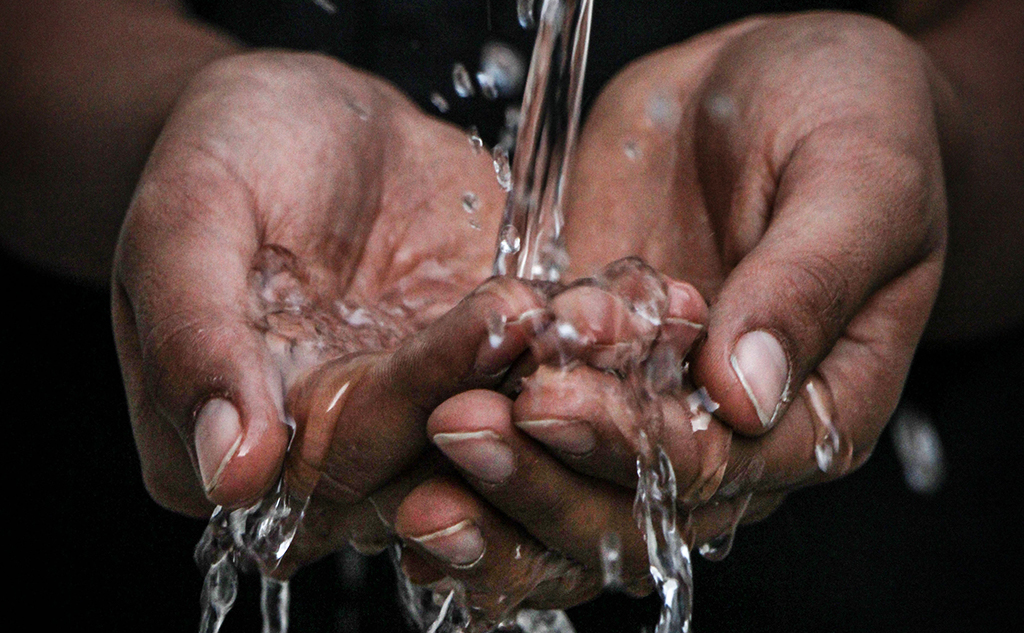This is the key question posed by the study published on 27 June by the French Inter-ministerial Department for Forward Planning and Prediction of Economic Change (PIPAME)*. After outlining the context, issues and challenges facing the sector, the study investigates eleven families of solutions and prioritises four of these. The study identifies the factors behind evolution and development within the sector, establishing three scenarios and proposing a series of recommendations.
Prior to any study of the water sector in France, distinction must be drawn between the “small water cycle” and the “large water cycle”. The first (also called the “domestic cycle”) refers to the production and distribution of drinking water and the collection and treatment of wastewater. The second (“natural cycle”) covers the management of the resource, and its monitoring, predictions and resilience.
The water sector fits within a context of changes in social expectations and increased pressures on water resources, linked to climate change, territorial reorganisation and the control of public expenditure, compounded by strict requirements regarding health (see New Sources of Pollution). It must face up to various economic, technological and organisational challenges in order to be ready to meet the requirements of safety and continuity of services (supply and drainage).
Two major challenges
The two major challenges facing the water sector are modernising its infrastructures and quality of service, and delivering its transition in terms of ecology and energy performance. All while taking into account costs, regulations and changes in demographics, urban development and climate.
For the “small water cycle”, this involves ensuring the long-term operability and quality of service in rural regions, improving management in high-density areas and extending the re-use of urban wastewater. For the “large cycle”, this requires managing the risks associated with micro-pollutants and emerging pollutants and supporting ecological transition in the agricultural, industrial and energy sectors. On a broader level, this requires funding the sector’s existing and future needs, creating value from water data, facilitating access to the innovations market and accelerating the development of water-based businesses while encouraging awareness of the challenges associated with water.
Eleven families of solutions identified
The report presents several families of solutions, four of which are regarded as priorities (see box below). The integration of these solutions must make it possible to reduce intervention costs, optimise processes, anticipate new societal, health or environmental challenges and offer the user services that meet their evolving needs in a cost-efficient manner. It should be pointed out that these solutions are being developed within water- and drainage-related activities in conjunction with other local services: energy, heat, waste, security, the management of risks including flooding, the resilience of territories, etc.
Factors conditioning sectoral evolution and development
The main factors conditioning sectoral evolution and development range from changes in the demand for water resources to the level of maturity of consumer demand, via the decompartmentalisation of the sector with respect to other sectors, through to economic and regulatory factors, digital transformation, societal changes and changes in occupations.
Once these factors were identified, the authors of the report envisaged three different scenarios: one that is conservative and encourages continuity, another reflecting a flexible and proactive sector, then an intermediate and cautious scenario. These options prompted them to propose some general recommendations.
Four families of priority solutions
- New means for collecting, exploiting and evaluating data (for example sensors, inspection robots, connected devices for data collection; networks based on the IoT for transportation; interoperable information systems, big data, data-mining, AI, monitoring tools, modelling and simulation tools for evaluation).
- New methods of manufacture and installation for sustainable networks (e.g. new materials for pipes and coatings, connecting pipes, trenchless techniques for installation and re-conditioning).
- Advanced treatments for the return and/or re-use of treated wastewater or for the production of drinking water (e.g. optimisation of biological treatments, bio-solar purification, technologies offering more compact solutions, reduced costs and elimination of pollutants: nitrogen, phosphorus, etc.).
- More energy-efficient and resource-producing infrastructures (e.g. treatment plants and off-grid systems using methanisation, solar power, etc., recovery of waste or treatment by-products through recycling nutrients and minerals, etc.).
Seven recommendations from the study
- Decompartmentalise the water sector both internally and with related external stakeholders. This could be achieved by setting-up new partnerships, a centralised collaboration mechanism or even instigating a working group dedicated to any necessary revision of elements of the regulatory framework.
- Create a centre of excellence for innovation in water bringing together stakeholders from different backgrounds (energy, waste, town-planning). Some of the main proposals include an on-line showcase of projects and quality certification.
- Create a cluster to pool experience and for the deployment of new full-sized solutions for SMEs (for example via a “special agreement”).
- Establish business models and innovative funding to tackle tighter budget constraints while also incorporating environmental externalities and adapting to new challenges such as managing rainwater or treated wastewater.
- Strengthen the French model to adapt to changing professions and skillsets. This involves enhancing and harnessing the professional capabilities needed to meet new challenges linked in particular to technological developments and climate-related changes.
- Raise awareness amongst consumers and decision-makers of the challenges facing the sector, building trust and improving social acceptability.
- Encourage and coordinate the development and deployment of digital solutions applied to the water sector. New tools are emerging (AI, blockchain, etc.) but these require structuring of the profession as a whole, data interoperability, quality reference material and a bolstering of cyber-security (for the record, drinking water forms part of the twelve business sectors of vital importance covered by French Military Planning Law). In fact, this calls for a nationwide strategy to digitalise the water sector.
* Water of the Future: Challenges and Perspectives for Businesses within the Sector, Etudes Economiques [Economic Studies], June 2019.




